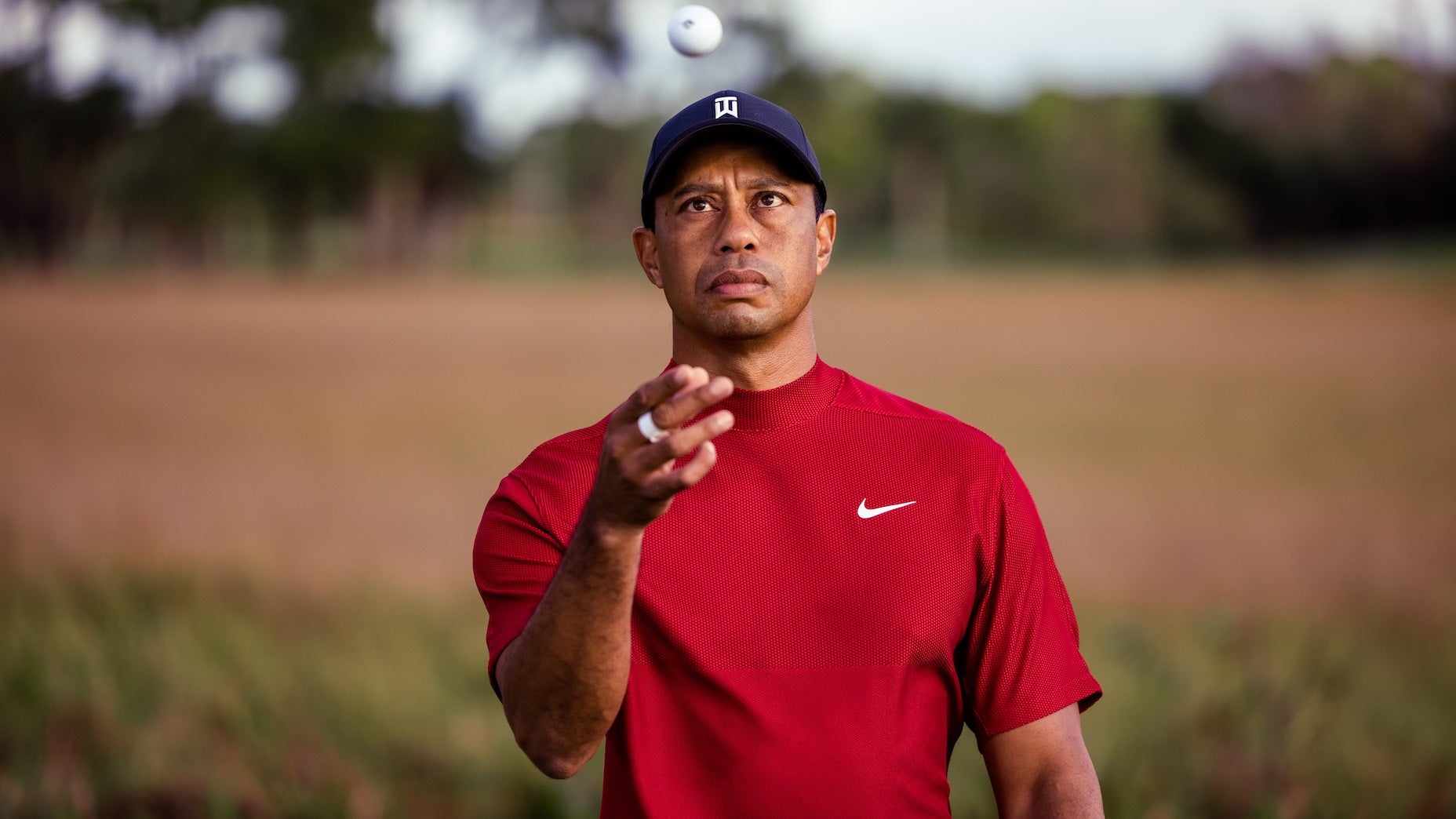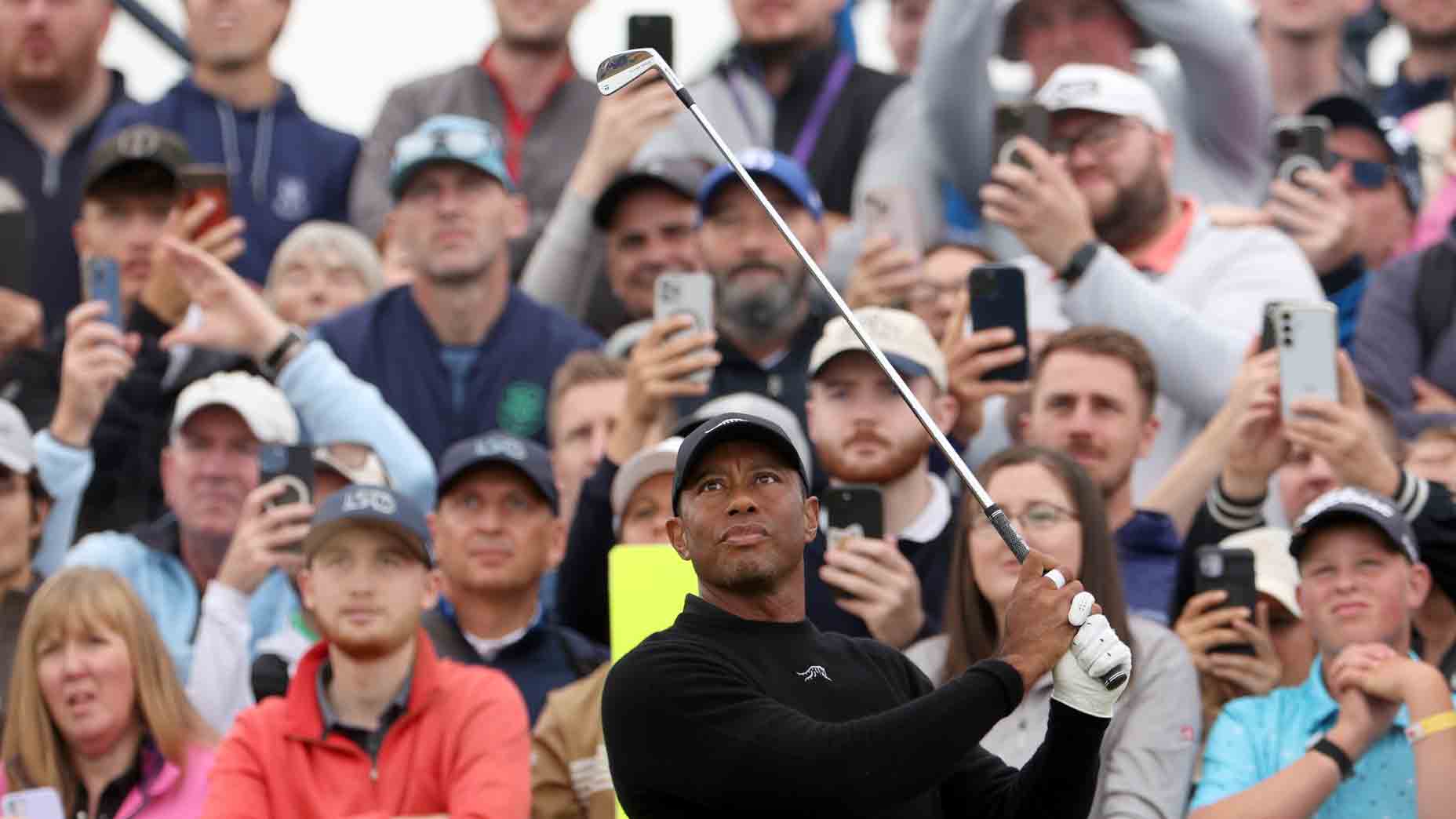Bridgestone Tour B (2024) golf balls: 3 things you need to know

Bridgestone's 2024 Tour B lineup consists of four models — Tour B X, XS, RX and RXS.
Bridgestone
Realizing not everyone has the time to consume endless content on product launch day, we’re trying something different and offering a fresh variation of our detailed tech write-ups that hits the high points. Here’s what you need to know about Bridgestone’s 2024 Tour B golf ball lineup coming to retail on Feb. 16 for $49.99 per dozen.
Ch-ch-ch-ch-changes
Tour B’s cover construction has significantly changed since Reactiv entered the picture in 2020. Adding “impact modifiers” to the urethane allowed the cover to react differently depending on the force imparted at impact. At driver swing speeds, the cover recovered quickly to generate more ball speed and distance. However, when a softer touch was delivered — think a deft wedge shot — the cover stayed on the face longer, taking on more of the grooves to produce additional greenside spin.
The Reactive cover formula remains an important piece of Tour B’s overall design for 2024, but if one were to peel back the cover, they’d find a dense mid-layer (called “XCLRNT”) sandwiched between the urethane and core.
This is what Bridgestone calls the Reactiv X system — a combination of the company’s second-generation Reactiv IQ cover and all-new XCLRNT mid-layer that play a major role in tailoring all four models (Tour B X, Tour B XS, Tour B RX and Tour B RXS) for specific player types.
“The mid-layer is two-fold,” said Elliot Mellow, Bridgestone’s golf ball marketing manager. “Off the driver, the firmer mid-layer is going to produce higher initial ball speed. That increases distance. On the flip side, the layer accelerates the control of the ball. With a firmer backboard to pinch that cover against, it also allows for more control and stopping power on short-game shots. It’s enhancing all of the work we’ve done on the cover.”
Bridgestone Tour B X Golf Balls
$44.99
View Product
Speaking of the cover, Mellow confirmed all four models feature a slightly softer cover to accommodate the new mid-layer — the cover and mid-layer deliver a deeper sound at impact as well — but the change didn’t affect compression.
“When we signed Tiger Woods, there was no way I would have guessed he’d play the Tour B X,” Mellow said. “But the fact that the cover continues to get softer each generation, now [Tour B is] his golf ball. It’s a testament to the work we’ve done on the cover construction.”
Test it all
In the past, Bridgestone used to give Tiger Woods prototype versions of the Tour B XS (his former ball of choice) to test and offer feedback on during the creation process. Distance players would receive prototypes of the Tour B X. At the time, there wasn’t much of a reason for players to test all of the prototypes — until this year.
With Tiger Woods and Jason Day making the move from Tour B XS to Tour B X — not to mention changes that were being made to their gear setups — Bridgestone chose to have staffers test all of the Tour B models for the first time to see if the mid-layer and cover modifications moved them into a different model.
“In the past, if we had eight prototypes and half of them were the spin model and half were the distance model, we’d test the spin models with Tiger and distance models with a distance player,” said Mellow. “In this iteration, we tested all the prototypes with all the players. It started at ground zero. Tiger and Jason had made gear changes and we didn’t know which way they’d go. We felt it was prudent to look at both types of prototypes for all players.

“Some of the feedback we’d gotten was a draw shot would start to draw and then kind of fall. It wouldn’t necessarily hold that same trajectory. From a ball flight standpoint, those were the areas we looked at. Guys like Tiger want to have their cake and eat it too — meaning they want all the performance on the long shots but with better greenside control. That mid-layer with slight tweaks to the impact modifiers allowed us to dial in all four models.”
While Woods and Day stayed in the Tour B X, Fred Couples swapped the Tour B RXS for the Tour B RX following extensive testing — and a few conversations with Woods.
“He originally switched into the lower compression last year,” said Mellow. “But with all of the balls spinning more around the green, he’s able to get into the RX and still have it perform at a high enough level on the approach shots. He talked to Tiger to fact-check things when he first moved into the RXS. They definitely talk about the different balls in the lineup.”
Low and go

Adding a firmer mid-layer helps all four Tour B models generate a higher initial ball speed. Still, another change comes from altering the overall recipe: a lower initial launch angle.
“As we know, if a ball is super low compression, it rides with the driver longer,” Mellow said. “Riding with the driver causes it to launch higher. So by going to a slightly firmer mantle layer, the ball deflects at a lower initial launch, so that’s why the apex on all the balls is a touch lower.”
During testing, Jason Day saw driver ball speed increase by 2.5 mph with a lower launch angle; the trend continued into the scoring clubs as well where ball speed increased slightly with a lower launch and more spin. Mid-to-high handicaps might not pick up on the small change, but it’s something better players will likely notice during testing.
Specs
The Tour B lineup ($49.99 per dozen) is comprised of four models for different swing speeds. The Tour B X and Tour B XS are designed for golfers over 105 mph, with the XS offering more spin than the X. With Tour B RX and Tour B RXS, the models have similar traits to the X and XS but perform well for sub-105 mph swing speeds.
Want to overhaul your bag for 2024? Find a fitting location near you at True Spec Golf.












